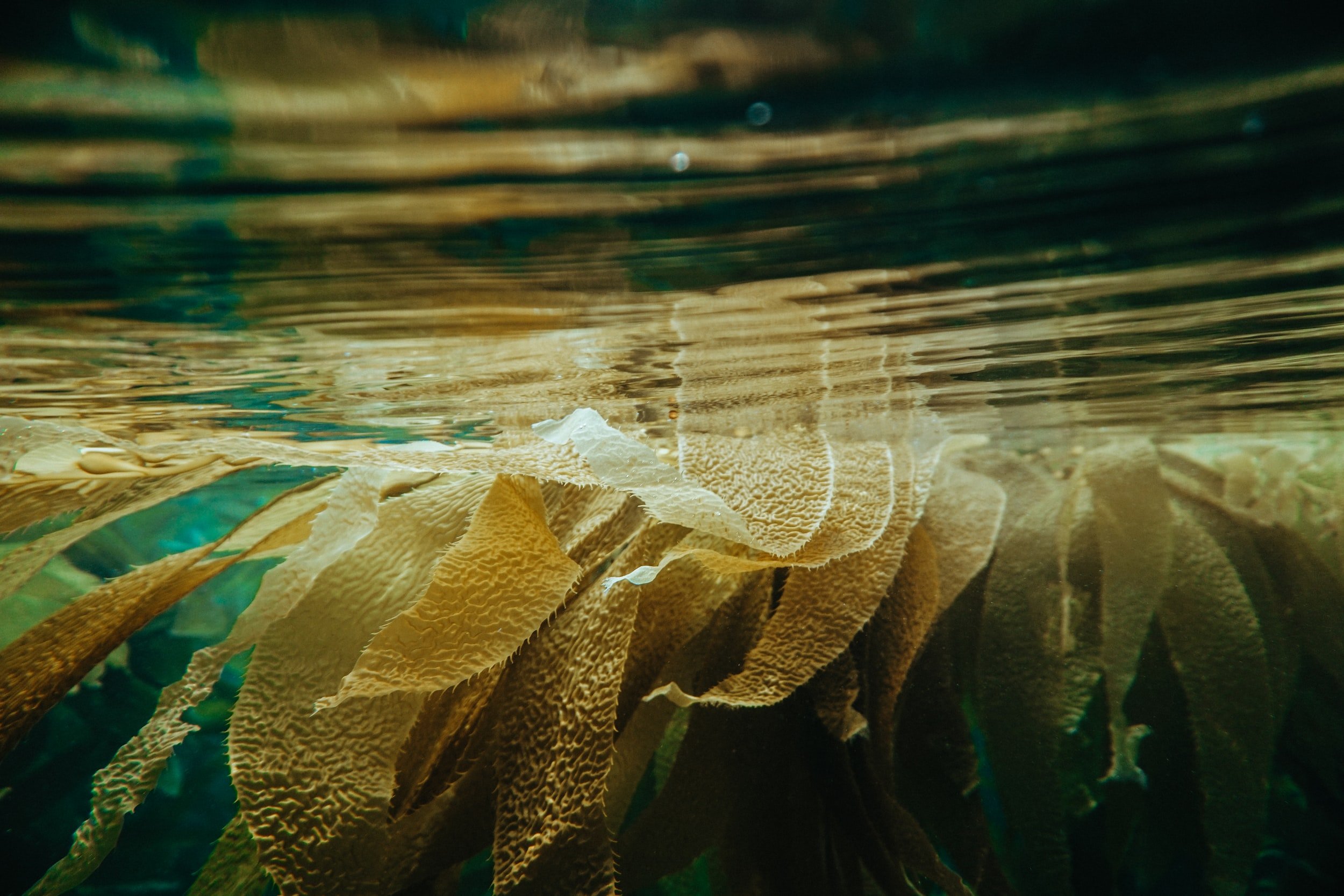
Kelp (Water)
Kelp is a powerful nature-based carbon solution.
If we farmed Kelp in just 5% of U.S territory waters, we could sequester the carbon emissions of 20 million cars and create 50 million direct jobs.
Kelp is a sustainable protein source, can be used for biofuels or compostable packaging, and is a scalable solution that can support developing coastal economies.
Putting kelp in cow feed could remove up to 85% of methane gas from cow burps and farts worldwide.
What problems does Kelp help solve?
When we talk about “excess carbon,” that's not just a problem in the air but also the water. As carbon levels rise, so does the number of emissions absorbed by the ocean.
This is called ocean acidification.
Think of ocean acidification as if you were putting lemon in your water. A little bit is great, but if you put 20 lemons in your glass, you’ll end up with heartburn.
That’s basically what's happening in our oceans.
It absorbs so much carbon that it’s harming animals and endangering our supply of food and oxygen.

Kelp helps reverse ocean acidification because it absorbs the excess carbon dioxide and uses it to grow, supporting fish habitats and ocean biodiversity.
Kelp is the fastest growing plant on earth and can sequester 5X more carbon than any other land plant.
In less than a year, a tiny kelp spore can grow to over 100 feet at the rate of 1 foot per day.
Unlike trees that need 100 years to be fully grown. Kelp beds grow to their full size in a year, allowing for an annual renewable harvest.
Kelp is independent AF; it doesn’t need fertilizer, fresh water, land, pesticides, or herbicides. All these babies need are ocean water and sunlight.
Kelp is low maintenance, affordable, and easily implemented at scale.
Your attendance here supports donations to 501 © 3 GreenWave, an organization dedicated to the expansion and education of regenerative aquaculture.
Curious to learn how you can integrate carbon solutions into your brand?
Find out more at www.urfwb.com



